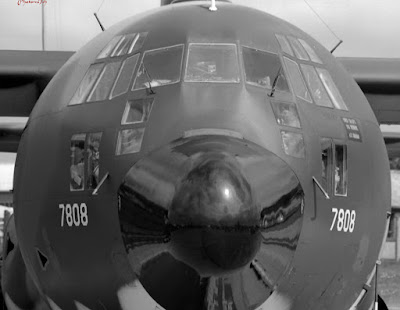
From
time to time I find it strange the way events come together! for
instance, I was in the darkroom working on some prints that I could
not get the sky to burn in properly. There was nothing unusual in me
burning in the sky, most of the photographs I produce have had the
skies enhanced in some way. But this time I could not get it the way
I wanted it.
The
strangeness in this case was that a few days before, I was reading a
thread on my favourite forum about how to deal with whited out skies
when printing. I took part giving an account of my method of dealing
with it. One of the other contributors suggested split grade
printing. But when he described the process it is more akin to double
grade printing - this is where you use another grade to bring out
part of the image that will not burn in at the grade you are using.
 |
| All the circled images needed double grade printing. |
The
process:
The
contact print in this case suggested that the stone work of the
building and sky were under exposed when compared to the reflection.
The segmented test print (grade 2) proved this by indicating that it
may need to be burned in for an extra twenty seconds above base
exposure of thirty seven seconds. Even with the extra light it did
not make the difference. After a further print and forty seconds
burn in, it still was not right. I decided to see if changing to a
harder grade when burning in would make the difference.
With
the discussion still fresh in my mind I opted to use the double grade
method to see if it would solve the problem I was having. I normally
would have used pre flashed paper but that would mean starting all
over again with a pre-flashed test strip. I chose the simpler route
of dialing in a harder grade, in this case 4, before burning in the
sky and face of the building.
 |
| The red area indicates the over lap area of the mask. |
Something
to consider:
When
using this method certain negatives can produce a grainier look to
the picture which may not be to your liking and you need to be
careful not to knock the masking frame when changing the settings and
using the mask.
The
burning in method:
It
takes practice to get this method to look natural, which is easy to
master when you have a nice defined area without things like
buildings poking up above the horizon. A piece of card is needed to
use as a mask. You do not need to use black card but if you have some
all well and good. Otherwise any card will do, if one side is
brighter than the other you should always make that side face the
lens to reflect the light back. In my opinion you should make the
mask smaller than the site that needs covering. Because the card is
kept moving it will make up for the under size when used with an up
and down motion. If you don't you can end up with a lighter shaded
area a bit like an out line you would get if it was still. When you
get it right it is very satisfying.
Result:
I
used forty seconds at grade four to burn in the building and sky. How
did I know it would work? I further considered the segmented test
print, took a calculated risk and listened to the little voice in the
back of my head. In other words I went with the creative flow.
Basic outline for split grade printing.
























